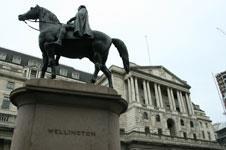The 0.5% reducation means that interest rates are at their lowest since 1694
The Bank of England has slashed interest rates to 1.5%, the lowest level in more than 300 years.
The 0.5% cut brings the rat under 2% for the first time since the Bank was established in 1694. It is the fourth reduction since October, when the rate was 5%.
Announcing the move, the Bank said business activity had contracted more sharply in the final quarter of 2008 and output was likely to continue to fall steeply in the first part of the year.
The Royal Institution of Chartered Surveyors (RICS) welcomed the decision but said it was unlikely to make much difference to lending levels.
RICS chief economist Simon Rubinsohn said: “The decision to lower interest rates today to just 1.5%, while welcome, is unlikely to provide any meaningful encouragement for banks to increase the availability of finance to either households or businesses. Indeed, the risk is that lenders are set to become even more restrictive over the coming months in the face of the worsening economic climate.”
Peter Rollings managing director of estate agent Marsh & Parsons, added: “The base rate cut is a further step in the right direction, but if we’re to see even a mild improvement in the number of people able to afford to move home – the government must start acting to thaw the mortgage freeze.
“Banks can’t lend because they have no money to lend – the government promised us action in November. The action we’ve seen to date is simply not enough.”
James Thomas, Head of Residential Investment at Jones Lang LaSalle comments,
“The decision to cut base rates... is not expected to make much difference to UK homeowners in the short-term. Banks are expected to restrict lending further this year and this means life will remain difficult for potential buyers. Furthermore, rising unemployment and uncertainty about job security will see potential buyers very reluctant to commit to any purchases.
“The only sign of respite for the housing market is that the large interest rate cuts made last year are feeding through to the LIBOR rate. The 3-month LIBOR rate was 2.65% at the start of 2009, down from a peak of 6.30% at the start of last October. Lenders’ standard variable rates are falling as a result, which will ease the pain somewhat for borrowers coming to the end of fixed-rate deals and unable to remortgage.”
The news comes as the government denied reports it is preparing to inject money into the financial system through a policy known as quantitive easing in order to stave off deflation.




























